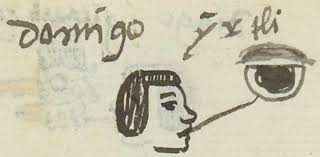Introduction to the Ixtli Eye
The Ixtli Eye is a concept deeply rooted in the rich cultural and spiritual traditions.The word “Ixtli” itself comes from the Nahuatl language. In this article, we’ll delve into the significance of the Ixtli Eye, its role in Aztec mythology, and its ongoing influence in modern times.
The Meaning Behind “Ixtli”
2.1 Origins of the Term Ixtli
The word “Ixtli” originates from the Nahuatl language, which was spoken by the Aztecs. In Nahuatl, “ixtli” refers to the “face” or “eye” but also metaphorically conveys the concept of identity, inner truth, and perception. The eye was not only a physical organ of sight but also a symbol of deeper understanding and spiritual insight.
2.2 Symbolism of Eyes in Mesoamerican Cultures
In Mesoamerican cultures, the eye was often seen as a powerful spiritual symbol.
The Ixtli Eye in Aztec Mythology
3.1 Connection to the Gods
In Aztec mythology, the gods were believed to possess extraordinary vision, The Ixtli Eye symbolized this divine sight.
3.2 The Eye as a Window to the Soul
The concept of the Ixtli Eye also connects to the idea of the “face” or “mask” as a metaphor for the soul.
Ixtli Eye in Art and Architecture
4.1 Representation in Ancient Artifacts
Aztec and other Mesoamerican artifacts often depicted eyes as central motifs. The Ixtli Eye appeared in pottery, masks, and stone carvings, symbolizing insight, power, and spiritual awakening.
4.2 Depictions in Aztec Temples and Monuments
Temples dedicated to gods like Huitzilopochtli or Quetzalcoatl might feature stylized eyes, symbolizing the presence of divine vision within the temple. These eyes also served as a reminder of the gods’ omnipresence and their watchful gaze over human affairs.
Spiritual and Mystical Interpretations of the Ixtli Eye
5.1 The Eye as a Symbol of Inner Vision
This symbolism ties into the concept of the “third eye” in other ancient traditions, representing spiritual awakening and enlightenment.
5.2 The Ixtli Eye and Meditation Practices
Some modern spiritual practitioners use the symbol of the Ixtli Eye in meditation and mindfulness exercises. Meditating on the Ixtli Eye can foster clarity and self-understanding.
The Ixtli Eye in Modern Culture
6.1 Revitalization in Indigenous Art
In contemporary times, the Ixtli Eye has experienced a resurgence in indigenous art. Artists often incorporate this ancient symbol into their works, blending traditional themes with modern interpretations. This revitalization of the Ixtli Eye celebrates cultural heritage while connecting with modern audiences who seek spiritual meaning and connection to ancestral wisdom.
6.2 Contemporary Use in Fashion and Jewelry
The Ixtli Eye has also found its way into fashion and jewelry, where it is often used as a motif in designs.
How the Ixtli Eye Inspires Personal Transformation
7.1 Reflecting on Inner Strength and Clarity
The Ixtli Eye, as a symbol of perception and insight, inspires personal growth by encouraging individuals to look inward. By reflecting on the deeper meanings behind this ancient symbol, people can cultivate inner strength, clarity of thought, and emotional resilience.
7.2 Connecting to Ancient Wisdom Through Symbols
The use of symbols like the Ixtli Eye helps people feel connected to the wisdom of ancient cultures.
Conclusion: The Timeless Power of the Ixtli Eye
The Ixtli Eye is more than just a visual symbol; it represents a profound connection between the physical and spiritual worlds. Rooted in Aztec mythology and Mesoamerican culture, the Ixtli Eye continues to resonate with modern audiences as a symbol of inner vision, self-awareness, and personal transformation. Whether viewed in ancient artifacts, contemporary art, or spiritual practice, the Ixtli Eye remains a timeless and powerful symbol.

Leave a Reply